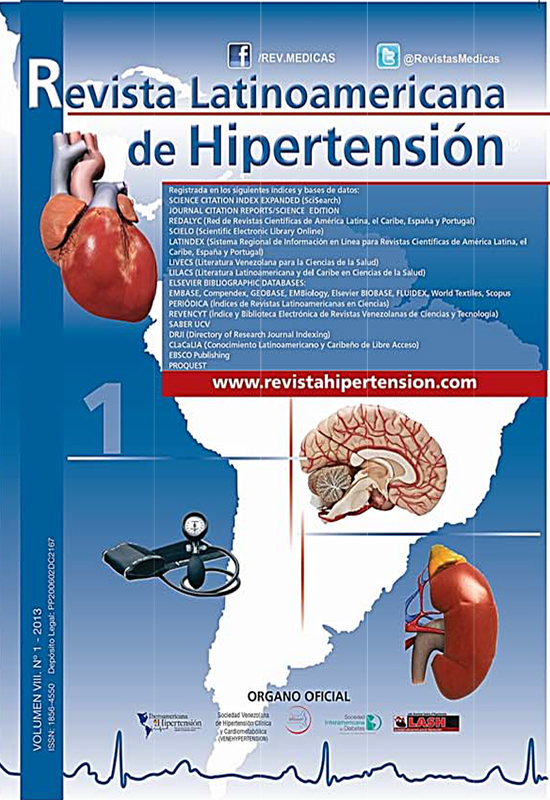High-sensitivity c-reactive protein epidemiological behavior in adult individuals from Maracaibo, Venezuela
Keywords:
Cardiovascular disease, low-grade inflammation, risk factors, metabolic syndrome.Abstract
Objectives: High-sensitivity C-Reactive Protein (hs-CRP) is one of the most applied inflammation markers; therefore, the main objective of this research is to evaluate its epidemiological behavior in adult subjects of the Maracaibo City, Venezuela. Materials and Methods: A total of 1,422 subjects, 704 women (49.5%) and 718 men (50.5%), were enrolled in the Maracaibo City Metabolic Syndrome Prevalence Study. The results were expressed as medians and inter-quartile ranges (p25-p75). Differences were determined through the Mann-Whitney U test and one-way ANOVA test with the Bonferroni adjustment. A multiple logistic regression model was designed for the analysis of the main factors associated with high serum hs-CRP levels. Results: Overall hs-CRP median was 0,.372 mg/L (0.126- 0.765 mg/L), 0,382 mg/L (0.122-0.829 mg/L) for women and 0.365 mg/L (0.133-0.712 mg/L) for men; p=0.616. An increasing pattern was observed in hs-CRP concentrations through age, BMI, waist circumference and HOMA2-IR categories. After adjusting for independent variables, a greater risk for elevated hs-CRP levels was observed with female gender, hypertriacylglyceridemia, obesity, diagnosis of metabolic syndrome and very large waist circumference values. Conclusions: Elevated hs-CRP levels are related to the metabolic syndrome but not with each of their separate components, being a greater waist circumference one of the more important risk factors, but only at values much higher than those proposed for our population.Downloads
Download data is not yet available.
Downloads
Issue
Section
Artículos

